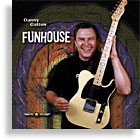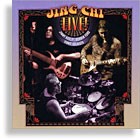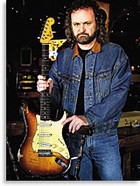
Tinsley Ellis is a road warrior, and he knows it.
“I paid some dues early, and now it’s paying off,” he says. “I have friends in all 50 states and several countries.”
He also knows what he’s doing. “I’m just one of the guys holding the door open until some young blues player comes and kicks that door in.”
Ellis has always considered himself a blues rocker lucky enough to follow when Stevie Ray Vaughan kicked the door open in the early 1980s. And while he sees a decline in interest in the blues amongst young people, he’s confident someone will eventually come around and kick open the door again.
“We got a guy in Atlanta, Sean Costello, who’s a great player and a great musician,” he said. “He’s the real deal. So it’s always promising.”
Ellis’ interest in the music came from growing up in Hollywood, Florida. His introduction came via the British Invasion bands serving up their own interpretations of American blues. “I came in through the back door with bands like the Animals, Yardbirds, and Cream.” He noticed that, “All roads seemed to lead to B.B. King.” So he took in a show in 1972 featuring the King of the Blues.
“I was transfixed, and it started an obsession.” Also, he grew up in the vicinity of the Allman Brothers, so Southern rock was a huge influence, especially Duane Allman and Dickey Betts. To this day he feels a close association to the Brothers, reminding us that Derek Trucks made his national debut on Ellis’ Storm Warning album.
As for the current lineup, the band still sounds great.
“Of course, having Warren [Haynes] and Derek doesn’t hurt. It’s a jump down to the rest of us. They’re a couple of extraterrestrials, like Duane and Dickey.”
Asked how guitar became such a vital part of his life, Ellis says it may have happened when his band played keg-party jams as a teen in Florida.
“We’d play parties. Could be two guitars, bass, drums, and vocals. Could be two guitars and drums, and no vocals. Anything. We’d play stuff like “Them Changes,” “Crossroads,” by Cream, or the Allman Brothers version of “One Way Out.” It was a great way to work on the chops.”
Tinsley ended up moving to Atlanta for college and in 1980 put together the first band he would actually lead, the Heartfixers. The band recorded for Landslide Records and were a popular act in the Southeast. “It was a good time for roots music. Folks like Los Lobos, Robert Cray, and Stevie Ray were breaking. It was a fun time.”
In the late ’80s, Ellis left the Heartfixers and started singing, not just playing guitar. He cut Georgia Blue, which started a five-record association with Alligator Records. A highpoint for him was Fire It Up, produced by the legendary Tom Dowd. “I learned a lot from him about repertoire, guitars, everything. I mean, you’ve really got to admire a 72-year-old guy who’d lean down and find the sweet spot in a Marshall. He rocked right up to the end. It was kind of hard not to listen to a guy who started sentences with, ‘Like I used to tell Eric,’ or ‘Like I used to tell Duane.’” He also liked the fact that Dowd didn’t hold back, spoke his mind, and was a tough taskmaster.
Ellis worked with other well-known producers, as well, and finally got a chance to push all the buttons for his latest release, The Hard Way, on Telarc. He says he’d like to get into producing records by other artists too. Laughingly he says “I think I can help younger artists because I’ve made pretty much every mistake that can be made in making albums.”
He has worked with the likes of Dowd, David Z, Brendan O’Brien, and Eddy Offord, and thinks he’s learned plenty that could help other artists.
“One of my first moves as producer was to liberate the effects that had been banished by my various famous producers. I used an Echoplex, Cry-Baby, Mutron, and a Trem Face, among others. No other producers wanted those around.”
The music on The Hard Way is a mix of blues, rock, country, and a surprising amount of soul.
“I really got bit by the Memphis bug on this one,” he explains. the album was cut mostly live in the studio using Little Feat drummer Richie Hayward and bassist The Evil One. Guitarist Oliver Wood helps on some of the cuts.
“Oliver is a great guitarist out of Atlanta who plays in a band called King Johnson,” Ellis notes with a laugh. “He played a lot of the beautiful guitar on my album that people are going to think is me… Oh, well!”
The bulk of the guitar is done with his ’59 Fender Stratocaster with a ’61 neck. “I bought it in the ’70s, traded a four-track Teac reel-to-reel deck for it.”
The guitar was sitting, unused, in his basement when a bandmate suggested he play it.
“And fell in love with it,” he said. “I was using it about 1980 when I played with Stevie Ray Vaughan. He played it through my ’64 Fender Super Reverb, and it sounded so good, I kept all the settings there. I’ve still got them there to this day! Whenever Stevie would see me, he’d say, ‘Wanna sell that Strat?’”
Tinsley’s other main guitar is his ’67 Gibson ES-345 with the Varitone circuit. “Les Paul told me once that’s the tone filter. So, that’s what I call it. That’s the guitar I’ve used the most. I love it to death.” That one he found in a music store in Atlanta in the ’80s.
“I don’t think they knew what they had. I paid $700 for it. In fact, in all the years I’ve been playing, I don’t think I’ve ever paid more than $1,000 for a guitar.”
Along with the effects, he used the ’64 Fender in the studio, along with a 50-watt Marshall JCM-900 head and a Soldano head that was in the studio.
These days, Ellis says he still listens to a lot of what inspired him in the first place – rock and blues. Otis Rush, Robert Cray, and Freddie King make frequent appearances on his stereo. And Sheryl Crow.
“I think she makes incredible rock and roll albums, as good as anyone out there. I bet she’d be a great blues-rock producer.” He is also fond of the newest ZZ Top record, Mescalero, calling Billy Gibbons a madman and a genius, and one of the most underrated guitarists in the history of rock and roll.
And again, Tinsley spends a lot of time on the road. So what was his oddest gig?
“We did a show at a nudist colony (laughs)! Really. We didn’t play nude. In fact, I wore extra clothes! The funny thing is, it got really chilly and we sold all of our t-shirts that night.”
Clothed or not, life on the road is non-stop for Tinsley Ellis.
To learn more about Tinsley, including his tour schedule, visit tinsleyellis.com.
Photo: Mykel Kane, courtesy Telarc.
This article originally appeared in VG‘s Oct. ’04 issue. All copyrights are by the author and Vintage Guitar magazine. Unauthorized replication or use is strictly prohibited.

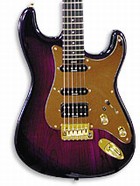

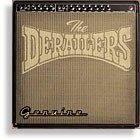
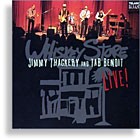
.jpg)
